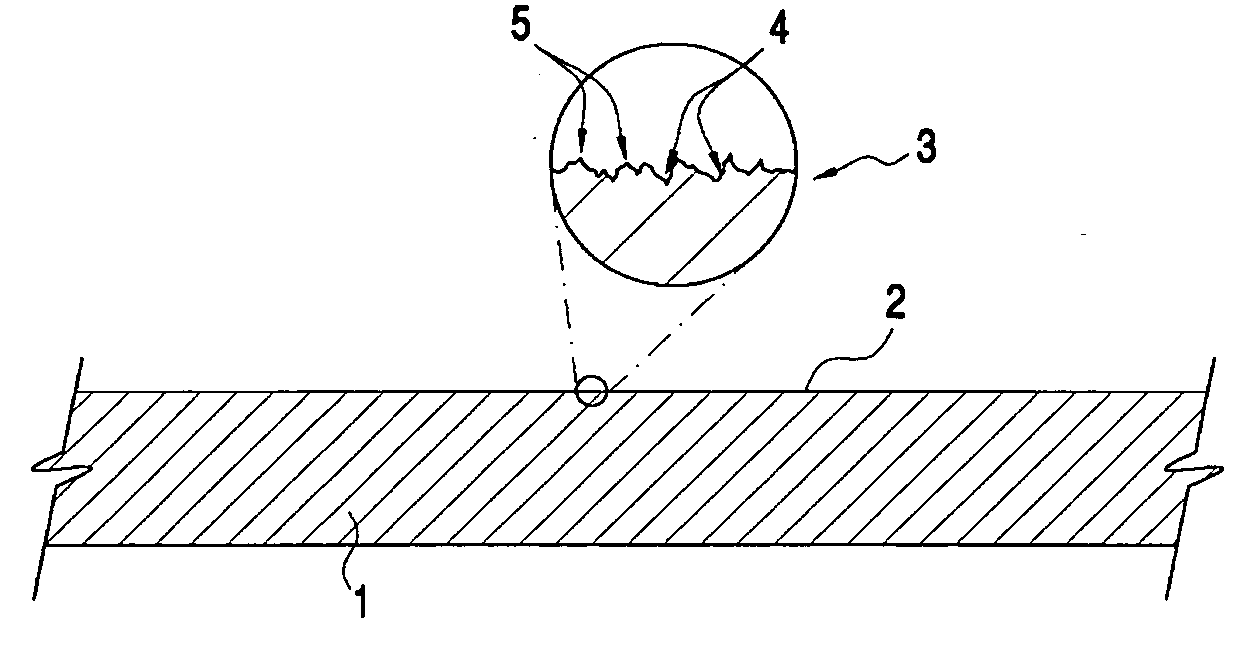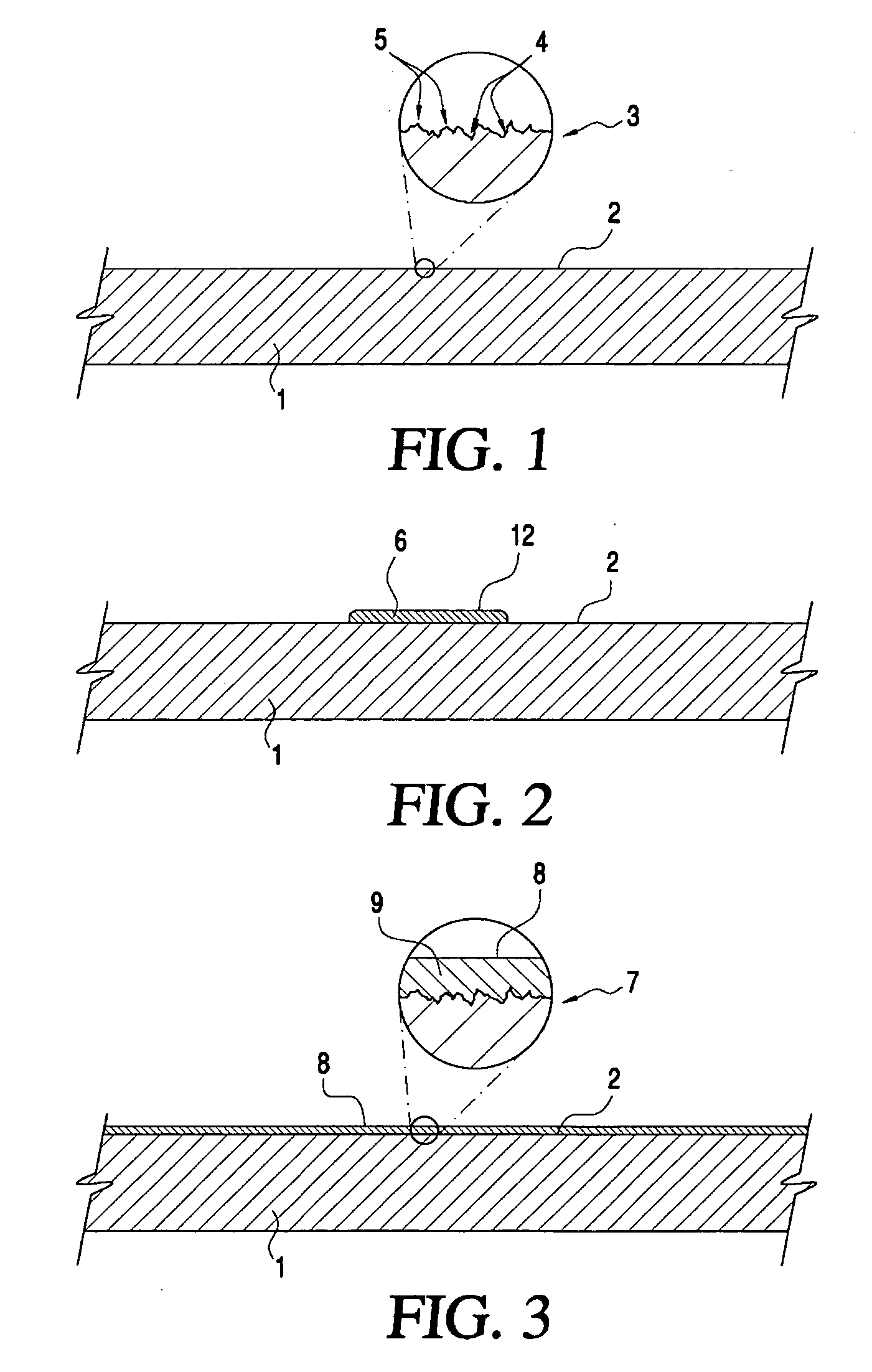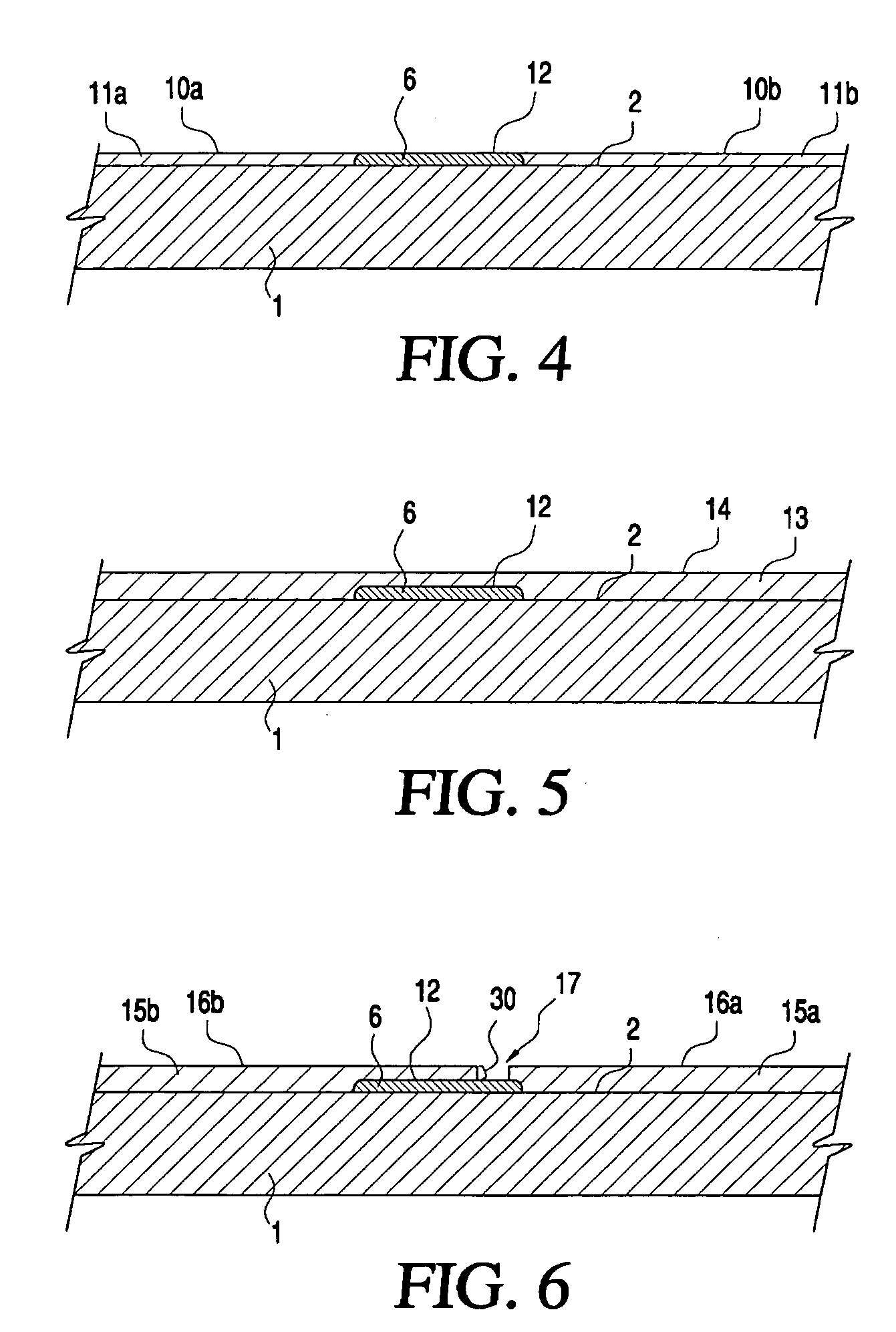Processes for planarizing substrates and encapsulating printable electronic features
a technology of electronic features and substrates, applied in the field of printing electronic features, can solve the problems of low viscosity compositions not being developed as well as high viscosity compositions, substrate variability, and substrates often showing high irregular surfaces
- Summary
- Abstract
- Description
- Claims
- Application Information
AI Technical Summary
Benefits of technology
Problems solved by technology
Method used
Image
Examples
Embodiment Construction
[0039] I. Introduction
[0040] In one aspect, the present invention is directed to processes for planarizing a substrate prior to application of an electronic ink to form a printed electronic feature. As used herein, the term “planarizing” and variations thereof means modifying a substrate surface to make it more planar (e.g., on a microscopic and / or on a macroscopic scale). In one aspect, for example, the process comprises the steps of: (a) providing a first substrate having a first surface, wherein the first surface has a surface irregularity; (b) applying a planarizing agent to at least a portion of the first surface; (c) treating the applied planarizing agent under conditions effective to form the second substrate, the second substrate comprising the first substrate and a planarizing feature formed from the planarizing agent, wherein the second substrate has a planar surface formed at least in part of the planarizing feature, the planar surface being more planar than the first su...
PUM
| Property | Measurement | Unit |
|---|---|---|
| Temperature | aaaaa | aaaaa |
| Viscosity | aaaaa | aaaaa |
| Surface tension | aaaaa | aaaaa |
Abstract
Description
Claims
Application Information
 Login to View More
Login to View More - R&D
- Intellectual Property
- Life Sciences
- Materials
- Tech Scout
- Unparalleled Data Quality
- Higher Quality Content
- 60% Fewer Hallucinations
Browse by: Latest US Patents, China's latest patents, Technical Efficacy Thesaurus, Application Domain, Technology Topic, Popular Technical Reports.
© 2025 PatSnap. All rights reserved.Legal|Privacy policy|Modern Slavery Act Transparency Statement|Sitemap|About US| Contact US: help@patsnap.com



